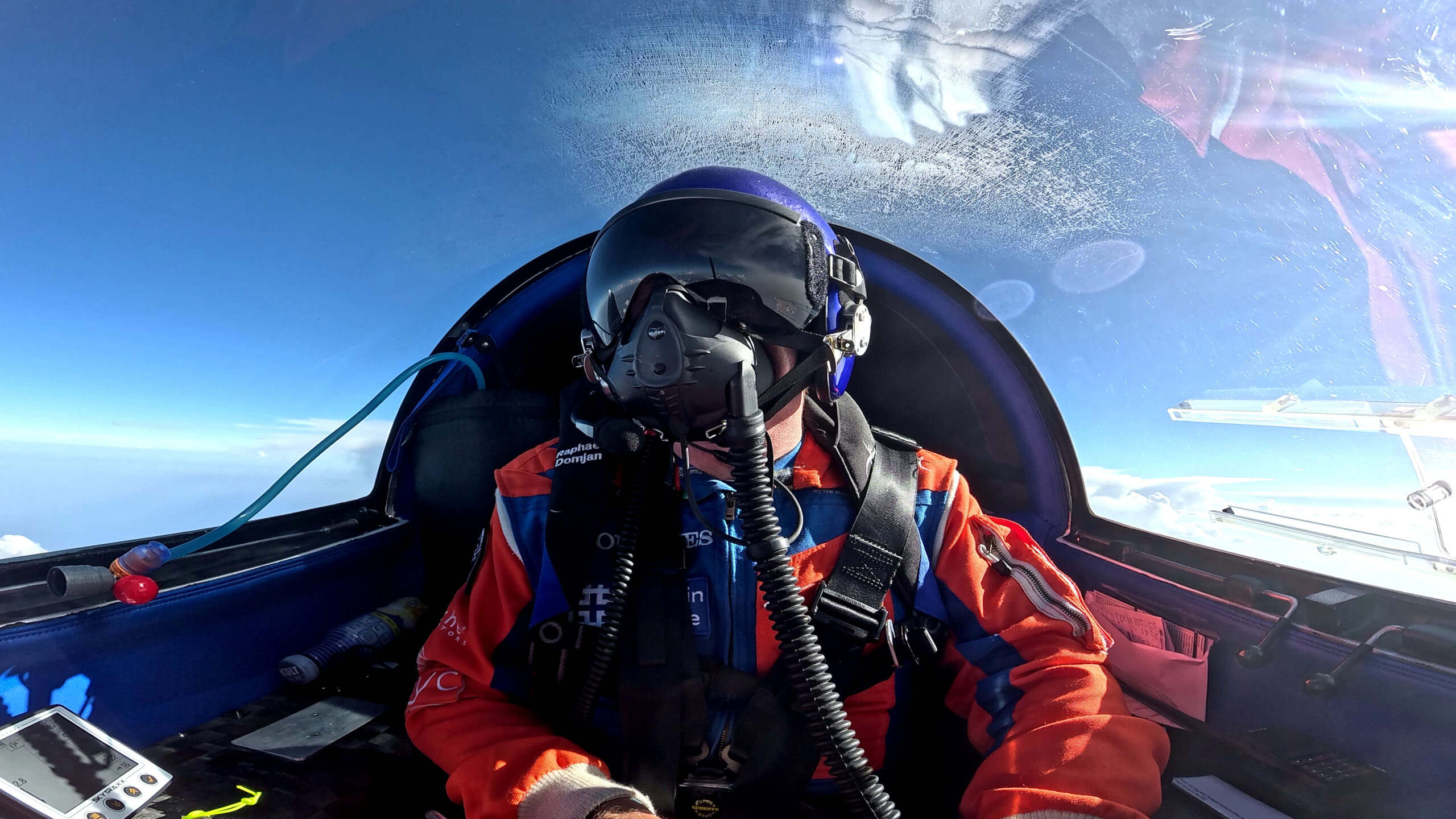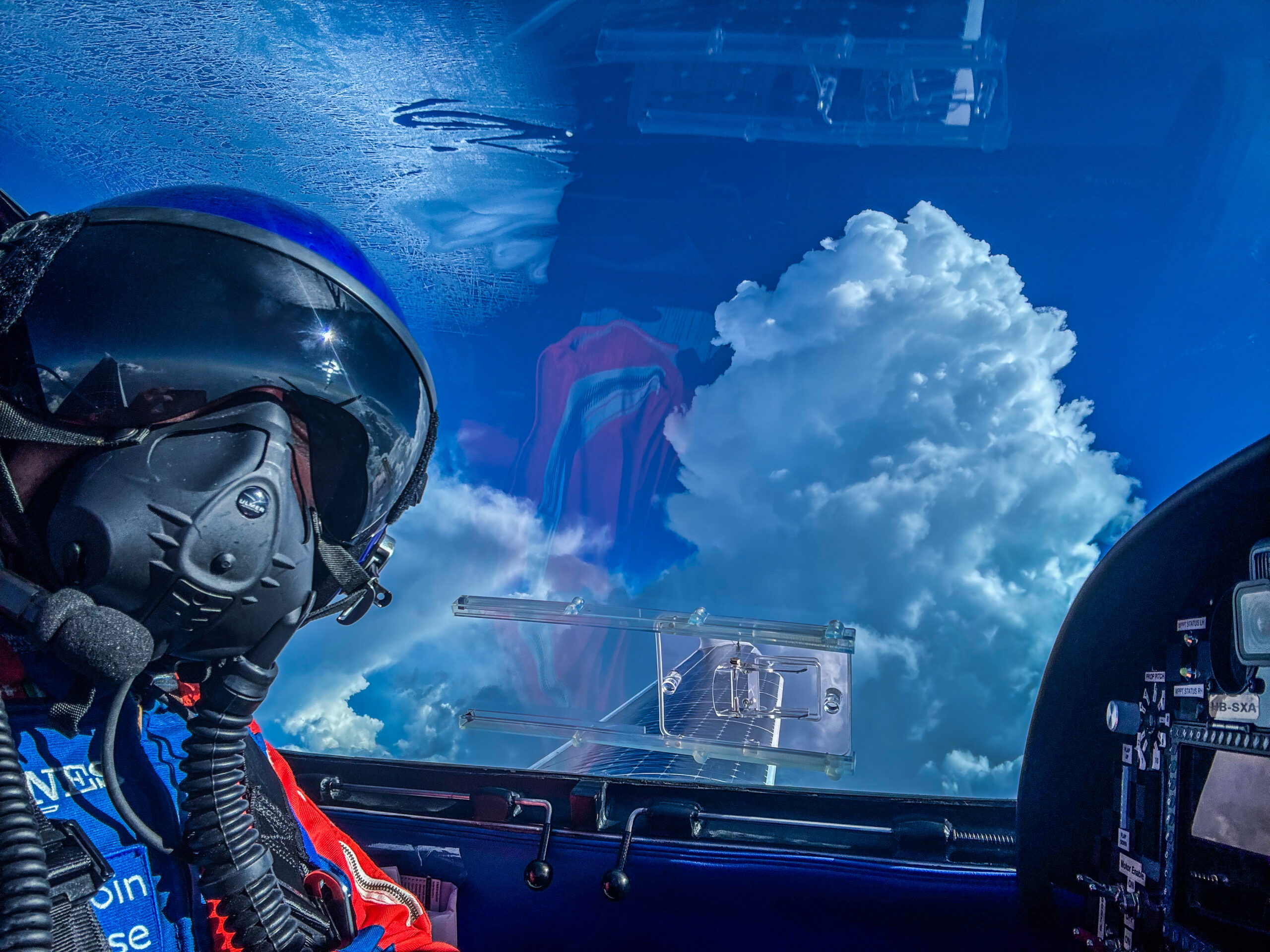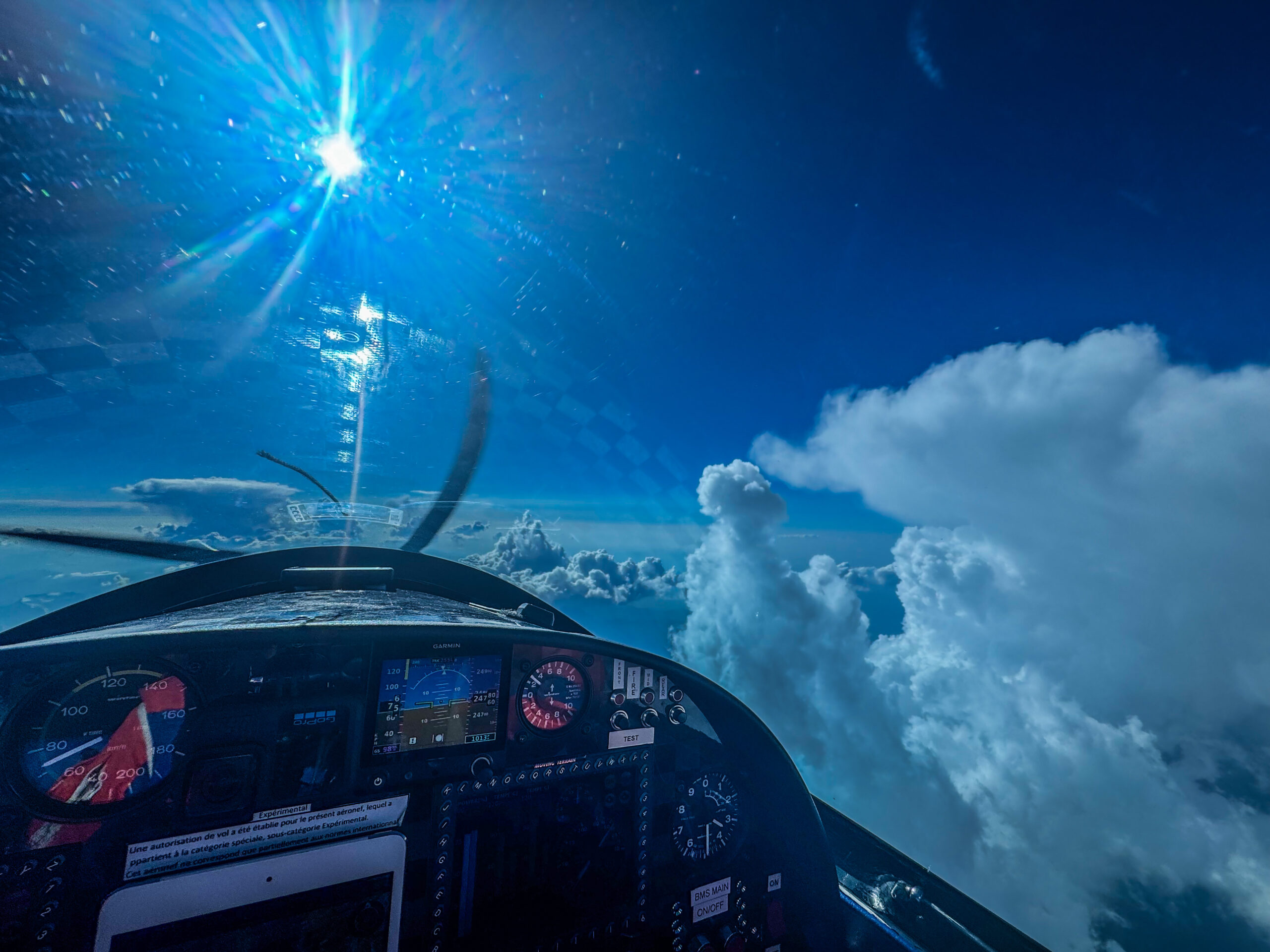There are more solutions than obstacles. Nicolas Zart
On August 12, 2025, the SolarStratos team achieved the breakthrough pilot Raphaël Domjan told us about on our The Ways We Move podcast, the miles they were aiming for in aviation and clean energy.
For readers of electricairmobility.news, this achievement is a record-setting flight and a clear signal of what lies ahead for electric aviation. In our earlier coverage of SolarStratos, including the August 2024 preview of their 10,000-meter goal, we highlighted both the challenges and transformative possibilities of this technology. Domjan flew the HB-SXA aircraft to a record altitude of 9,521 meters, that is 31,240 feet above the Swiss Valais Alps. This historic flight, which launched from Sion Airport and lasted five hours and nine minutes. It is now the highest manned flight ever reached by an electric and solar-powered aircraft, surpassing the previous Solar Impulse record of 9,235 meters set in 2010. Congratulations, Raphaël and the entire SolarStratos team!

Sunshing Power to the Stratosphere
According to the official SolarStratos press release, the mission’s latest feat used the highly modified solar airplane powered by a 22 square-meter array of solar cells and supported by the skillful use of natural thermal updrafts. Domjan’s flight was more than just a technological accomplishment. As he describes in our podcast, he has to maintain a perfect attitude while keeping the back of the plane to the sun where it can power its solar cells to the maximum. Near the record altitude, the SolarStratos crossed paths with a commercial airliner, providing a striking visual that symbolized the aviation paradigm shift that is now emerging.

The record, which is pending official validation by the Fédération Aéronautique Internationale (FAI), is already recognized worldwide as the high point in SolarStratos’s longstanding effort to promote decarbonized, silent, and sustainable aviation. The SolarStratos team stated, “This achievement marks a major milestone on the path toward reaching the stratosphere using only solar power and already fulfills the mission’s goal, to capture imaginations with emblematic, spectacular challenges that promote solar energy and the protection of our biosphere and planet.” Domjan, who celebrated afterwards with a traditional Swiss raclette, acknowledged the years of preparation by the entire team.
The SolarStratos HB-SXA Aircraft
The SolarStratos aircraft is a carbon fiber, electric propeller design, measuring nearly 10 meters in length with a wingspan of almost 25 meters. Its expansive solar panel array powers a lightweight yet robust propulsion system designed for high altitude and emissions-free flight. The near-silent performance, SolarStratos acts as a proof of concept that zero-emissions aircraft technology can now reach airliner altitudes, opening the door to a new era of sustainable air mobility.
Earlier in 2025, test flights had already brought the aircraft to new heights, including a flight in July that reached 6,589 meters, and an August 10 mission that climbed to 8,224 meters. Each mission helped refine the aircraft’s battery management, climb strategy, and ability to maximize energy capture from the sun, while addressing challenges that include weather conditions, atmospheric density, and pilot endurance during extended missions.

SolarStratos now aims to break the 10,000-meter mark, matching the cruising altitude of conventional jetliners. The project is the direct successor to PlanetSolar, the first solar-powered boat to circumnavigate the globe, and has always carried a clear mission: to demonstrate the practical potential of solar energy for the future of aviation. Over the years, the SolarStratos mission has captured global attention, serving as a communications platform to inspire action toward a decarbonized future.
If the future of aviation is to be sustainable and silent, SolarStratos is already proving what is possible.
